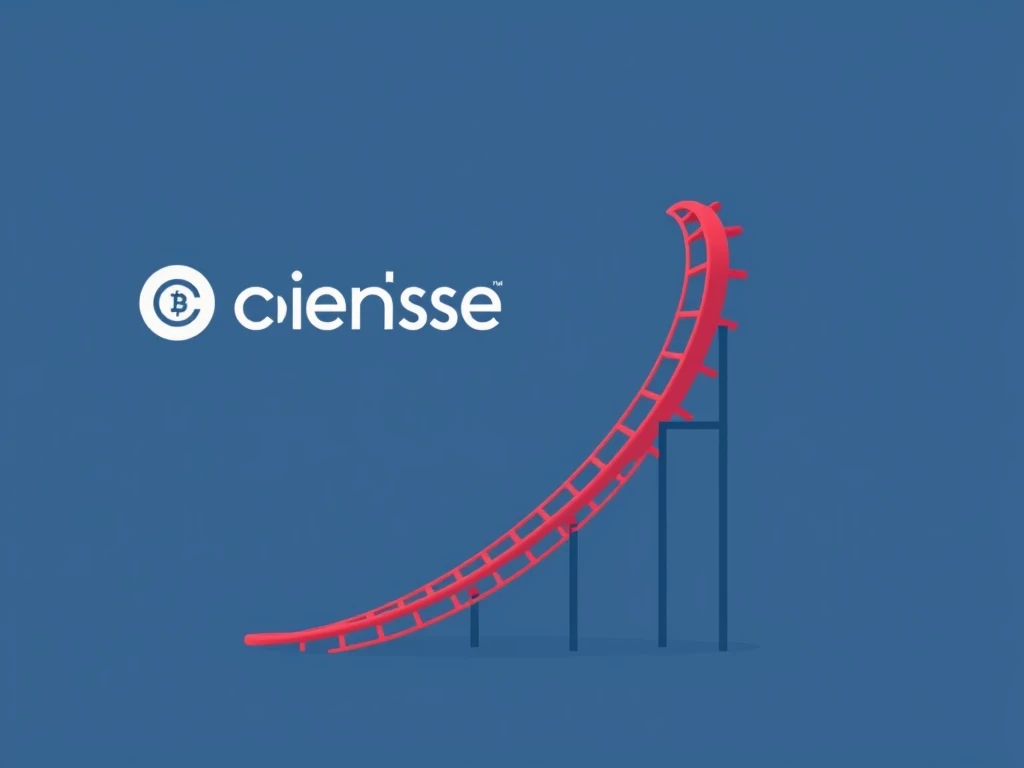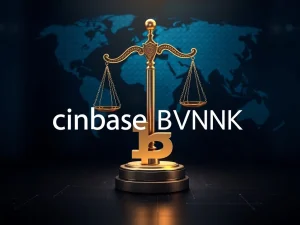SHOCKING $15M Memecoin Dump: Coinbase Base Faces Fierce Backlash

The crypto world is buzzing about a dramatic turn of events involving Coinbase’s Base blockchain and a memecoin that took a nosedive, wiping out millions in value. Just as Base was trying to showcase its open and accessible nature, a memecoin linked to its official social media post triggered a wave of criticism and controversy. Let’s dive into the details of this Base memecoin dump and understand why Coinbase is now scrambling to distance itself from the chaos.
Coinbase Base Backlash: The Memecoin That Sparked Outrage
It all started when Base, Coinbase’s Layer-2 scaling solution, shared a post on X (formerly Twitter) promoting its network with the slogan “Base is for everyone.” Accompanying this post was a link to a token with the same name on Zora, a platform where social media posts can be tokenized. This seemingly innocuous promotion quickly spiraled into a major controversy when the “Base is for everyone” token experienced a meteoric rise followed by an equally breathtaking crash.
Here’s a quick breakdown of the dramatic price action:
- Rapid Ascent: Within just over an hour of its creation, the “Base is for everyone” token soared to a peak market capitalization of $17.1 million.
- Dramatic Plunge: In a mere 20 minutes, the token’s value plummeted by nearly 90%, crashing to a market cap of just $1.9 million.
- Slight Recovery: While the token has shown some signs of recovery, it remains far below its peak value, trading around $7.7 million at the time of reporting.
| Metric | Value |
|---|---|
| Peak Market Cap | $17.1 Million |
| Lowest Market Cap (after dump) | $1.9 Million |
| Percentage Drop | ~90% |
This memecoin controversy immediately ignited a firestorm of criticism directed at Base and Coinbase. Crypto enthusiasts and industry observers alike questioned the judgment of promoting a token that so quickly became a prime example of the volatility and risks associated with memecoins.
Coinbase Distances Itself: “Base Did Not Launch a Token”
In response to the mounting Coinbase Base backlash, a Coinbase spokeswoman issued a statement to Crypto News Insights, firmly distancing Base from the controversial token. The core message was clear: “Base did not launch a token.”
Key points from Coinbase’s statement:
- Unofficial Token: Coinbase emphasized that the “Base is for everyone” token is not an official token of the Base network.
- No Token Sale: Base explicitly stated that it did not sell this token.
- Zora’s Tokenization Feature: The spokeswoman explained that Base’s post on Zora automatically tokenized the content, highlighting Zora’s platform functionality rather than an intentional token launch by Base.
- Legal Disclaimer: Coinbase pointed to a disclaimer on the token’s Zora page, cautioning users against expecting profits or ongoing development to increase the token’s value. This disclaimer further reinforced the unofficial and speculative nature of the token.
Despite distancing itself, the incident has raised eyebrows and fueled debate about the responsibility of blockchain platforms when their promotional activities inadvertently lead to speculative memecoin frenzies.
Crypto Community Criticism: Was Base Irresponsible?
The crypto community criticism was swift and sharp. Many users on X expressed disappointment and questioned Base’s judgment in promoting a token that appeared to be ripe for manipulation. Here’s a snapshot of the sentiment:
- Credibility Concerns: One X user lamented that “any credibility this chain had is now gone,” highlighting the potential reputational damage from the incident.
- “Transactional Extraction”: Former Riot Platforms researcher Pierre Rochard labeled the token as “terrible for the industry, very short-term transactional extraction,” suggesting it prioritized quick profits over long-term value.
- Botched Execution: AP Collective founder Abhishek Pawa argued that Base “tried redefining memecoins as ‘contentcoins’ and completely botched the execution.” He acknowledged the potential of tokenized content but criticized Base’s handling of the situation, leading to “justified backlash.”
The core of the criticism revolves around the perception that Base, even unintentionally, endorsed or facilitated a memecoin scheme, potentially harming unsuspecting users who jumped into the hype.
Tokenized Content: A Vision Defended Amidst the Chaos
Amidst the storm of criticism, Base creator Jesse Pollack stepped forward to defend the concept of tokenized content. He argued that creating a token for internet content is a necessary step towards a new creator economy.
Pollack’s defense can be summarized as follows:
- Normalization of Onchain Content: Pollack stated, “someone has to normalize putting all of our content onchain. I’m not afraid for it to be us.” He sees Base as pioneering the move towards making internet content natively part of the blockchain ecosystem.
- Creator Economy Vision: He believes tokenizing content is “the end game for how we can build a new economy where creators earn from their creativity.” This vision positions tokens as a mechanism for creators to directly monetize their work.
- Mental Model Overhaul: Pollack acknowledges that this shift requires “overhauling our mental models and product experiences,” suggesting a fundamental change in how we perceive and interact with online content and value creation.
While Pollack’s vision for tokenized content might hold long-term potential, the immediate fallout from the “Base is for everyone” token incident underscores the challenges and risks associated with this nascent space, particularly when it intersects with the volatile world of memecoins.
“Horrifically Sniped”: Whales Profit from the Pump and Dump
Adding another layer of complexity to the saga, Harrison Leggio, co-founder of crypto startup g8keep, pointed out that the “Base is for everyone” token was “HORRIFICALLY sniped.” This refers to the practice where sophisticated traders or bots quickly acquire a large portion of a newly launched token before it becomes widely available, allowing them to profit from the subsequent price surge and dump.
Leggio’s analysis revealed that:
- Early Whale Acquisition: Two addresses acquired 21% of the token’s supply for a relatively small investment of 2 Ether (ETH), approximately $3,200 at the time.
- Swift Profit Taking: These wallets then transferred the tokens and sold them, netting a total profit of around $300,000.
This “sniping” incident highlights the risks of market manipulation and insider advantages in the decentralized finance (DeFi) space, further fueling the negative perception surrounding the “Base is for everyone” token launch.
Looking Ahead: Lessons Learned from the Base Memecoin Fiasco
The Base memecoin dump incident serves as a stark reminder of the delicate balance between innovation, promotion, and responsibility in the crypto industry. While Base’s intention may have been to showcase the capabilities of tokenized content and the Zora platform, the execution and the resulting market dynamics led to significant backlash and reputational challenges.
Key takeaways from this episode:
- Caution with Memecoin Promotion: Blockchain platforms, even when not directly launching tokens, need to exercise extreme caution when their promotional activities can be misconstrued as endorsements of speculative assets like memecoins.
- Clear Communication is Crucial: Coinbase’s quick clarification was essential, but proactive and transparent communication about the nature and risks of tokenized content is needed to prevent future misunderstandings.
- Addressing Market Manipulation: The “sniping” incident underscores the ongoing need for measures to mitigate market manipulation and ensure fairer token launches in the DeFi space.
- Balancing Innovation and Risk: While exploring new frontiers like tokenized content is vital for crypto’s evolution, it must be approached with a strong awareness of the potential risks and unintended consequences, especially for retail users.
The “Base is for everyone” token saga, while painful for some, offers valuable lessons for the entire crypto ecosystem as it navigates the complexities of new technologies and evolving user expectations. It emphasizes the critical need for responsible innovation, clear communication, and robust safeguards in the ever-dynamic world of cryptocurrencies.







